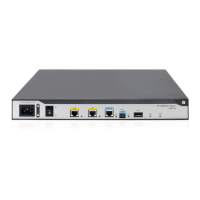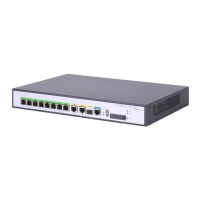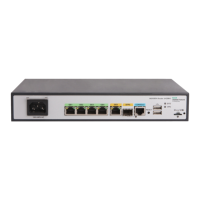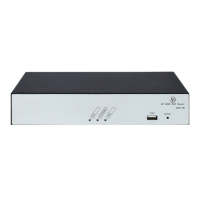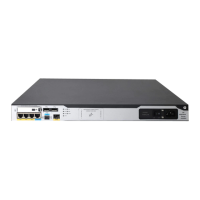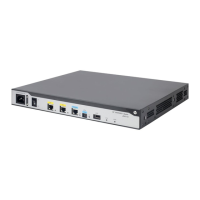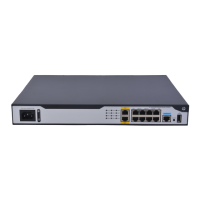240
Ste
Command
Remarks
1. Enter system view.
system-view N/A
2. Create a subinterface and
enter subinterface view.
interface interface-type
interface-number.subnumber [ p2mp
| p2p ]
By default, no Frame Relay
subinterface exists.
If you do not specify a
subinterface type when you
create a Frame Relay interface, a
P2MP subinterface is created.
3. Configure a virtual circuit on
the Frame Relay subinterface.
See "Configuring local Frame Relay
virtual circuits."
On a Frame Relay subinterface,
virtual circuits must be created
manually.
4. Configure address mapping.
See "Configuring Frame Relay
address mapping."
Available on P2MP
subinterfaces.
Configuring Frame Relay IPHC
IP header compression (IPHC) reduces the amount of bandwidth consumed by packet headers. It is
typically used for voice communication on low-speed links.
IPHC includes the following types:
• RTP header compression—Compresses the IP/UDP/RTP header (40 bytes in total) in packets.
• TCP header compression—Compresses the TCP/IP header (40 bytes in total) in packets.
For the duration of a connection, some fields in the RTP/UDP/IP or TCP/IP header do not change, and
other fields change in a predictable way. The IPHC compressor and decompressor maintain the fields
that do not change and the fields that change in a predictable way. The compressor only needs to
transmit the fields of a header that change.
Configuration restrictions and guidelines
When you configure Frame Relay IPHC, follow these restrictions and guidelines:
• To make IPHC take effect on a link, you must enable Frame Relay IPHC on both ends of the link.
• You can configure Frame Relay IPHC on either an interface or a VC. The settings on an interface
take effect on all VCs of the interface. The settings on a VC take effect only on the VC. When the
interface settings are different from the VC settings, the VC settings take effect.
• When the encapsulation type is IETF, IPHC negotiation is triggered after you enable IPHC. IPHC
takes effect only if IPHC negotiation succeeds. When the encapsulation type is nonstandard, IPHC
takes effect without negotiation. In this case, the encapsulation type must be nonstandard on both
ends of the link.
• Compression does not stop after you disable IPHC on an interface or PVC. To stop compression,
you must also execute the shutdown/undo shutdown command sequence on the interface or PVC.
• You can set the maximum number of RTP/TCP header-compression connections only after you
enable IPHC on an interface or PVC. The configuration takes effect after you execute the
shutdown/undo shutdown command sequence on the interface or PVC. After you disable IPHC,
the configuration is deleted.
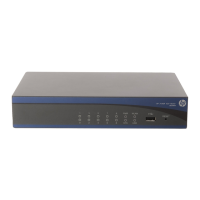
